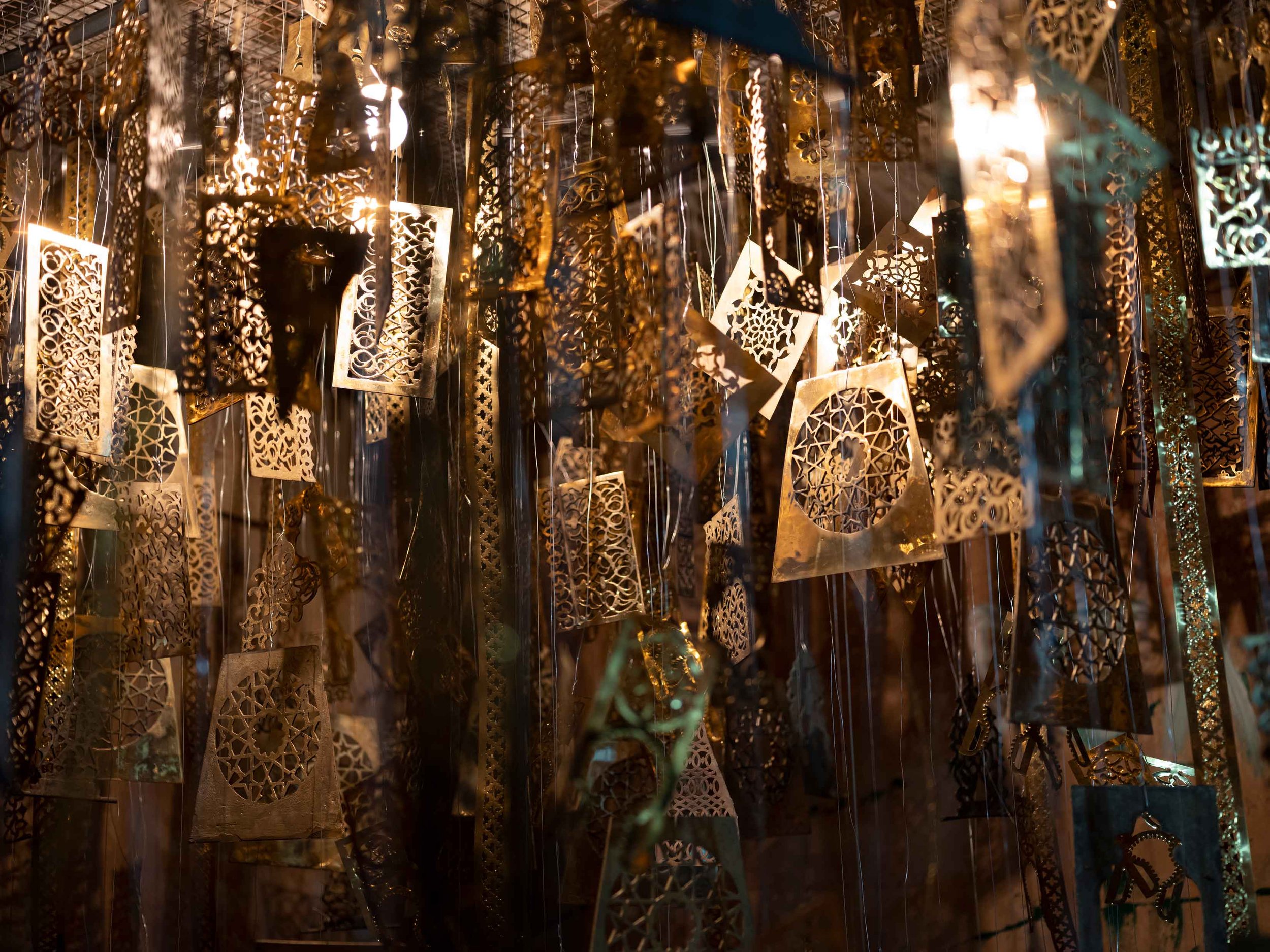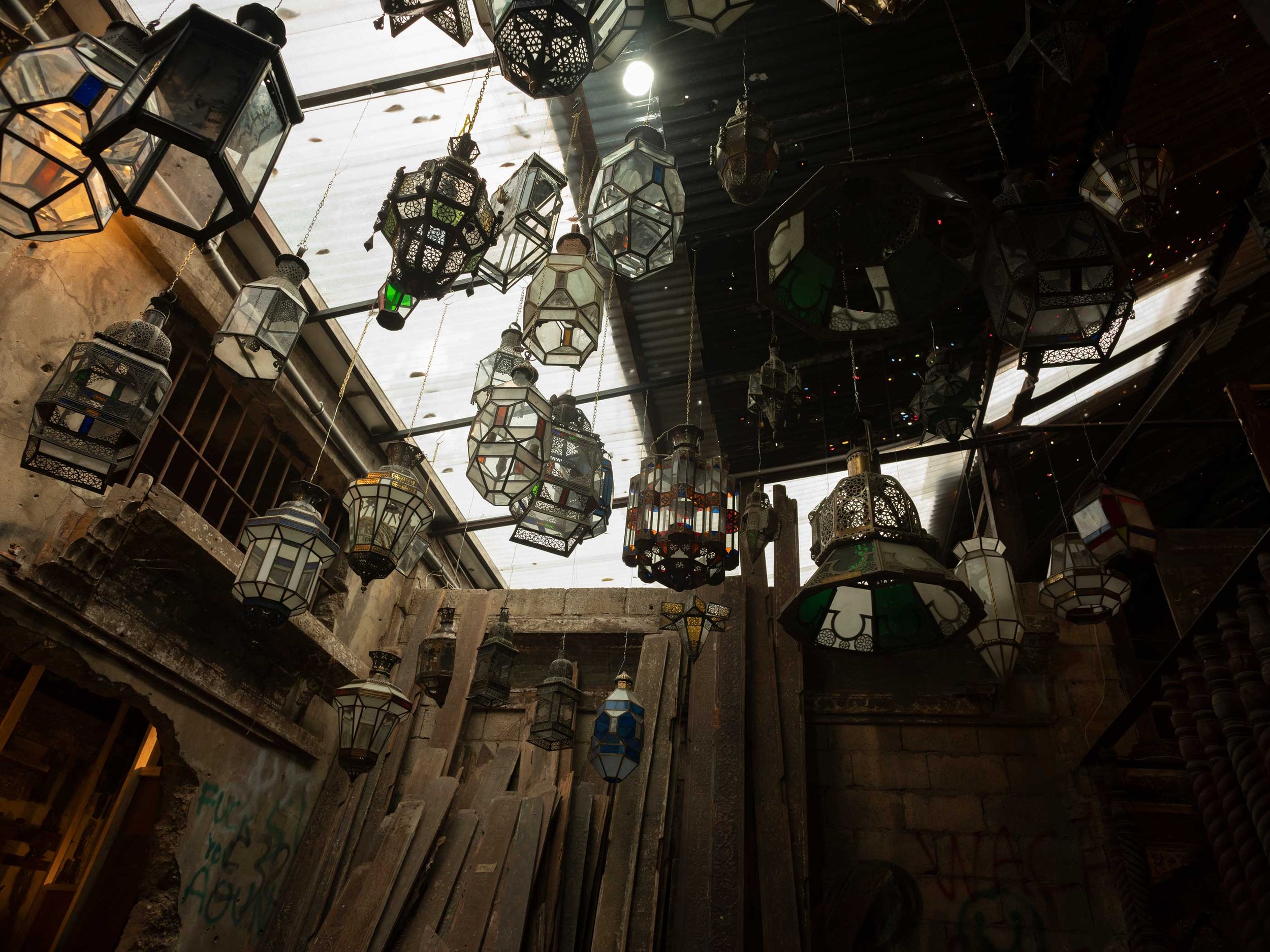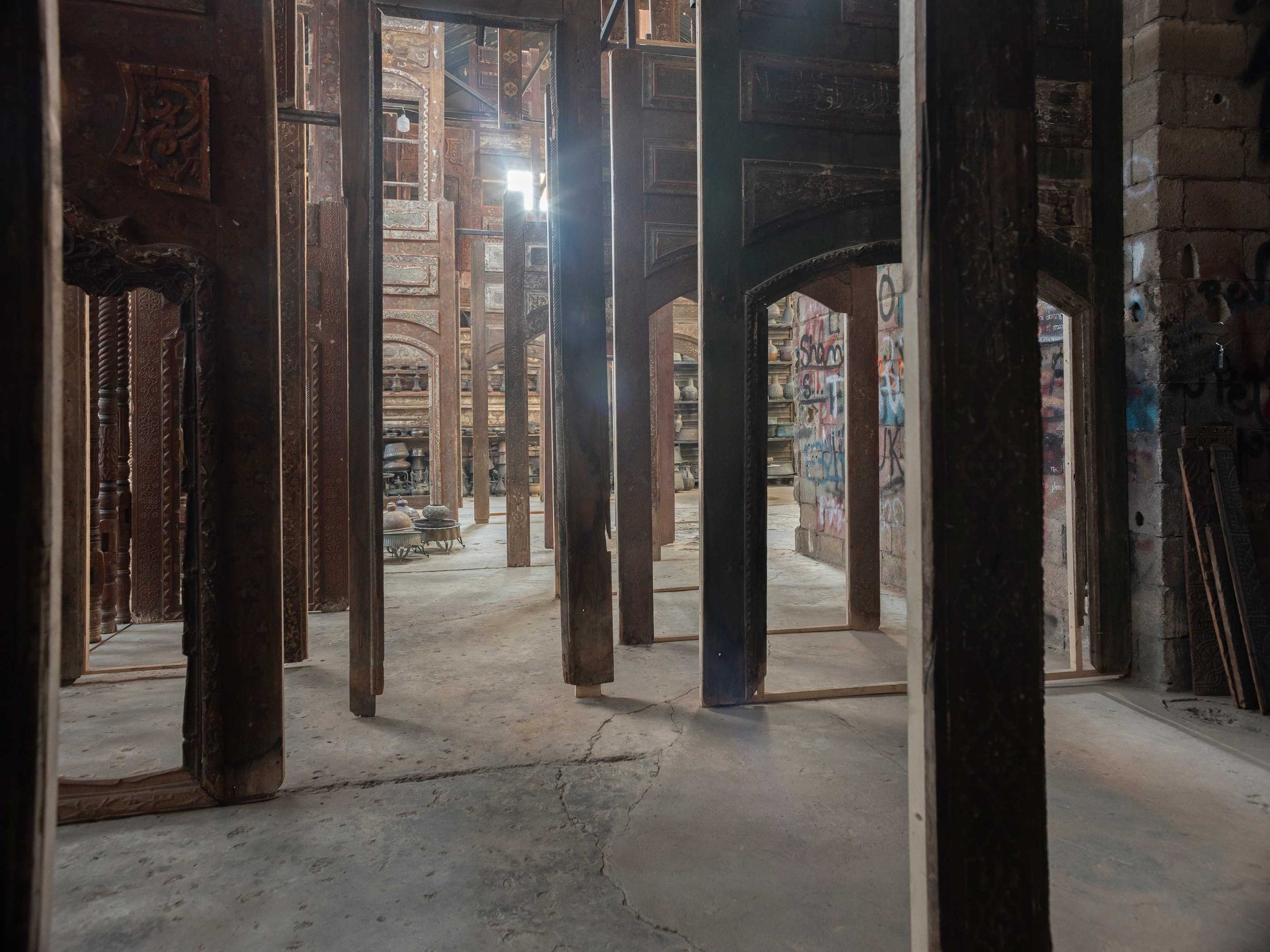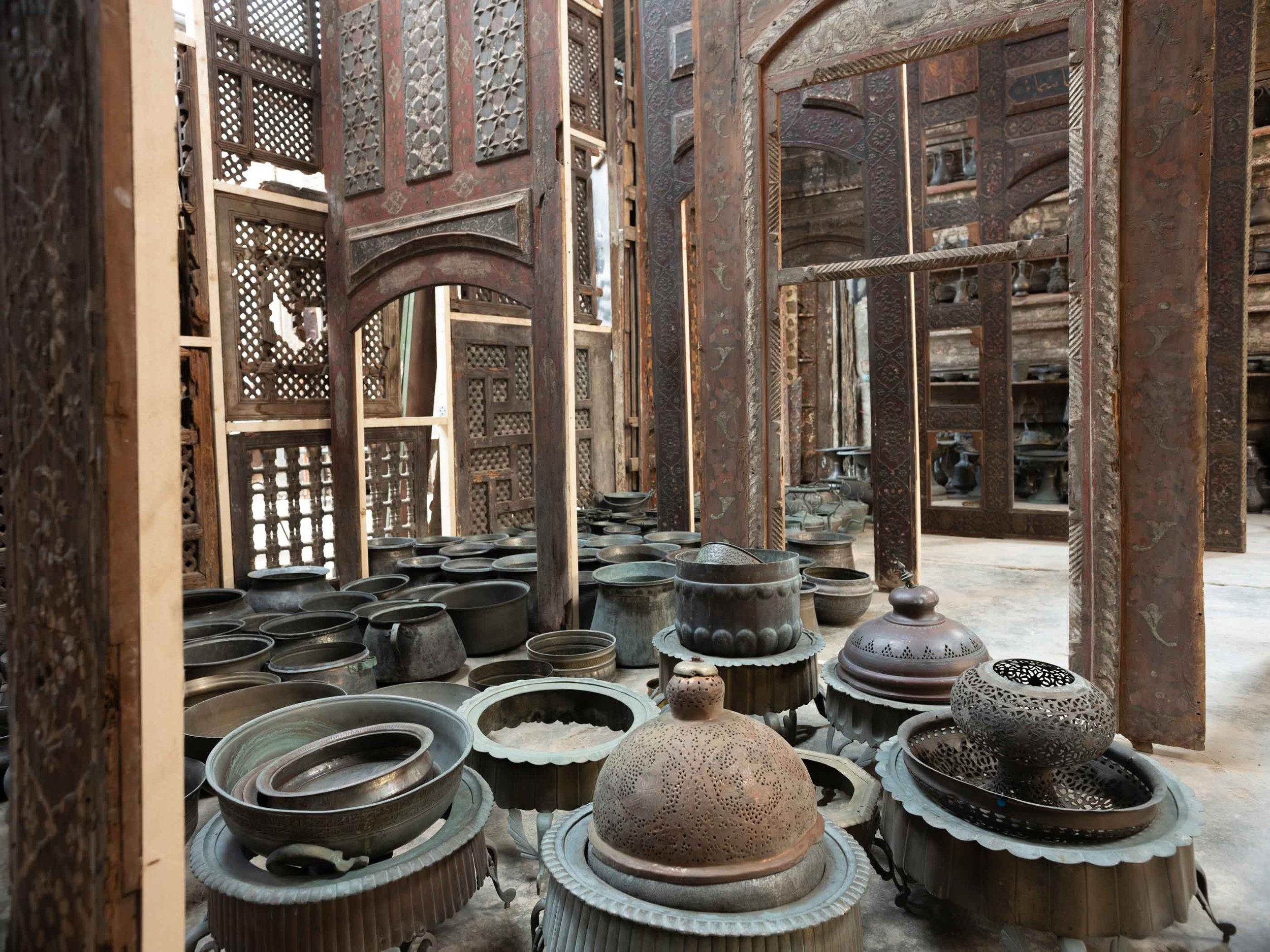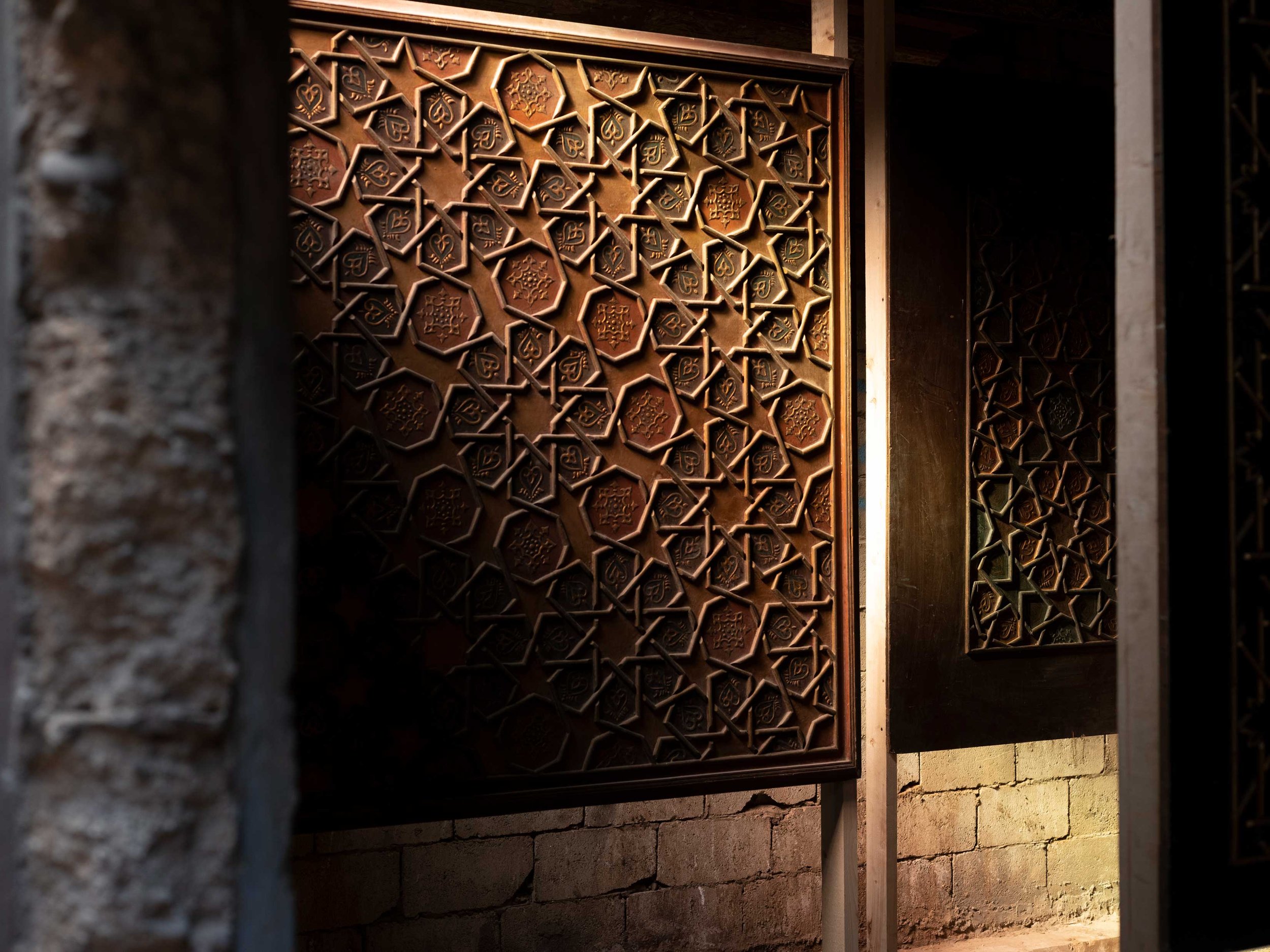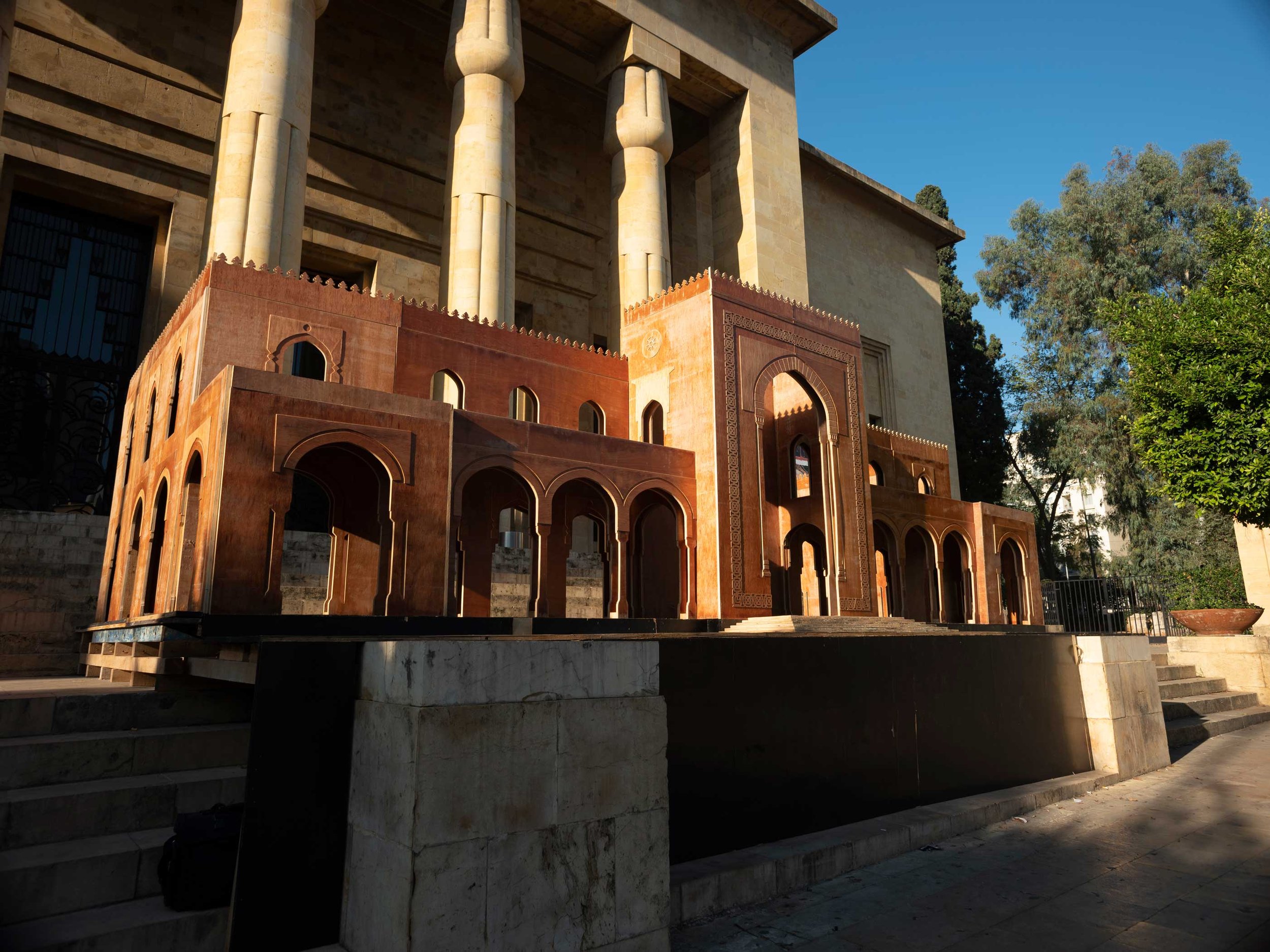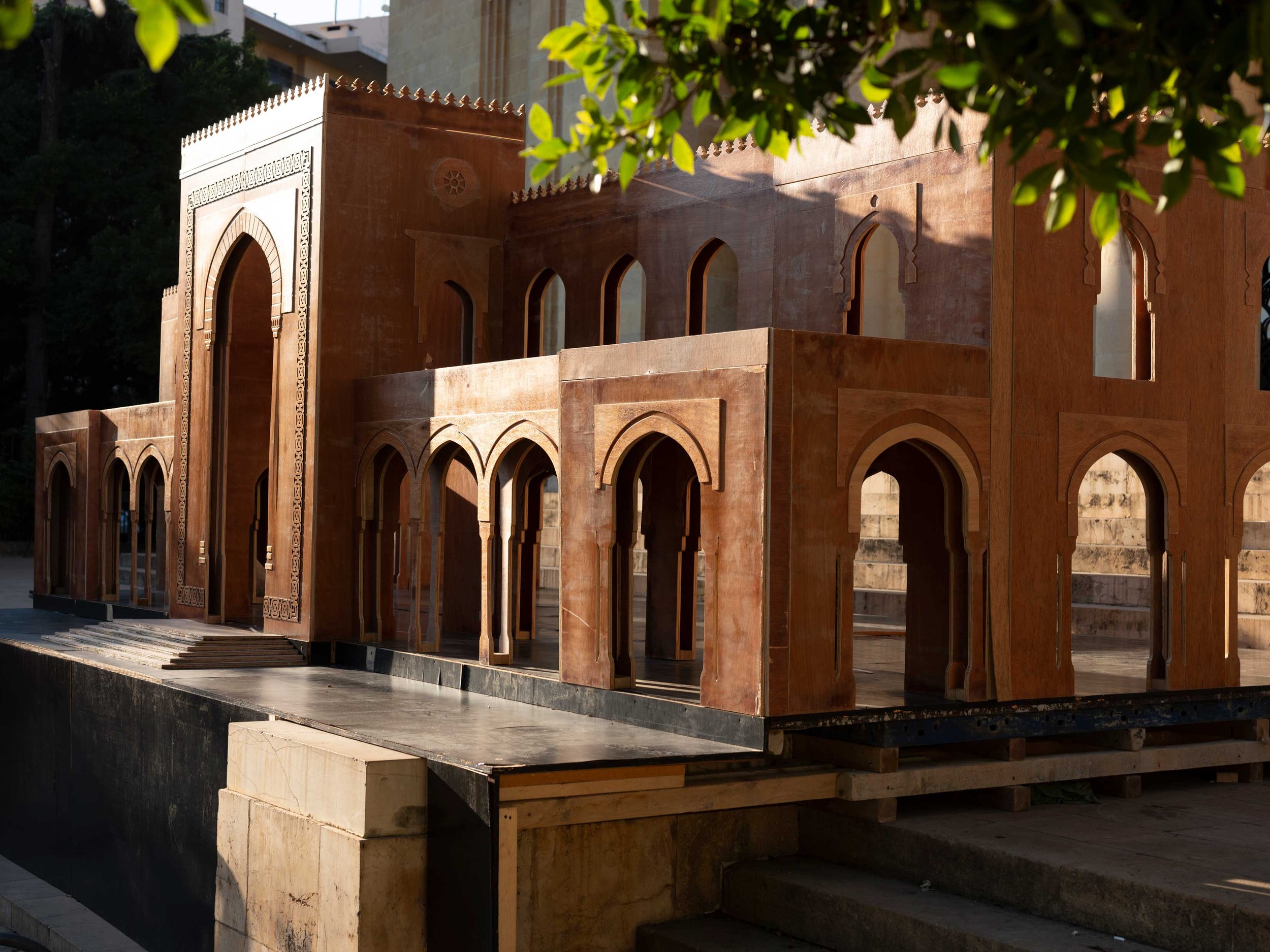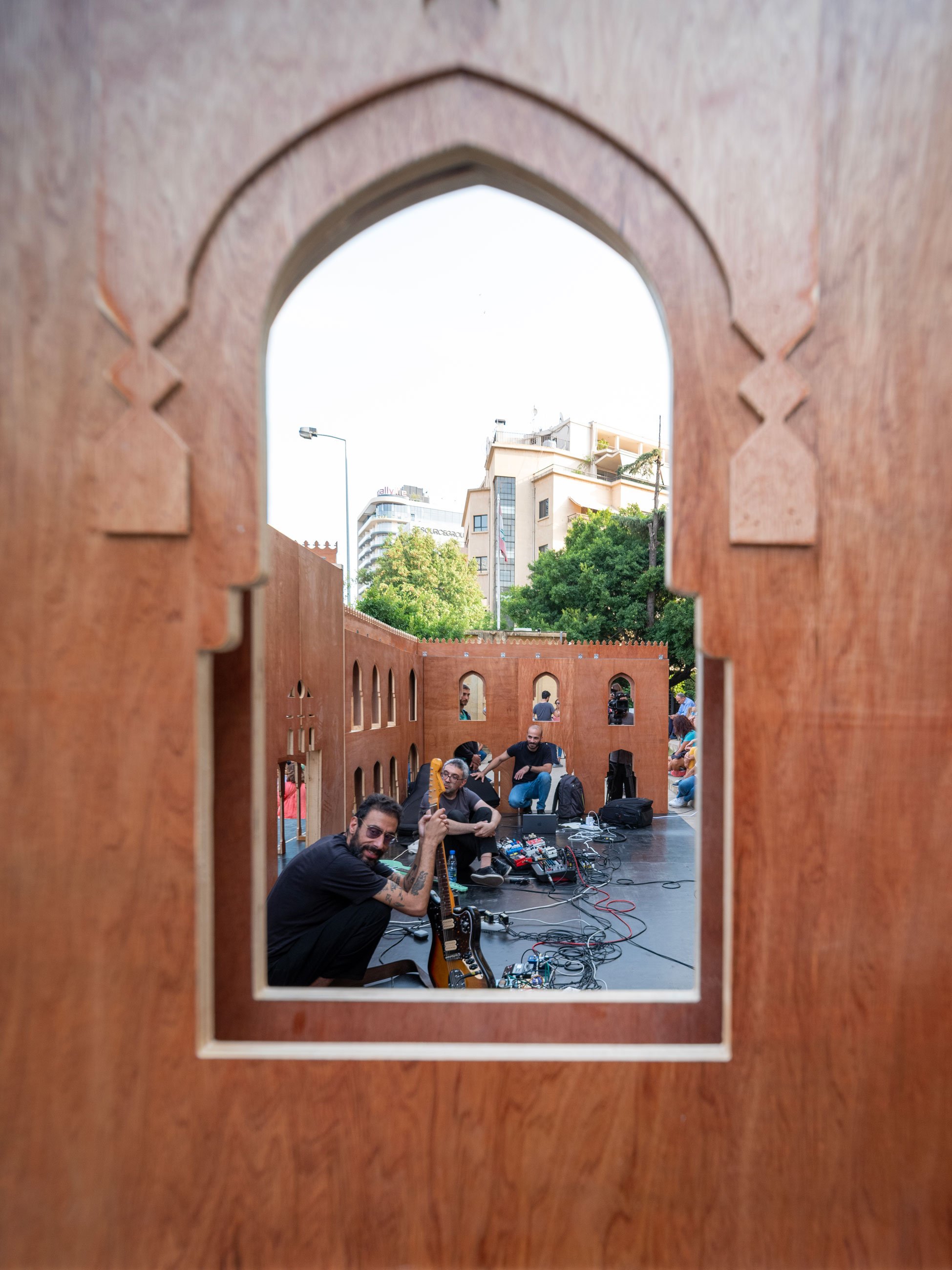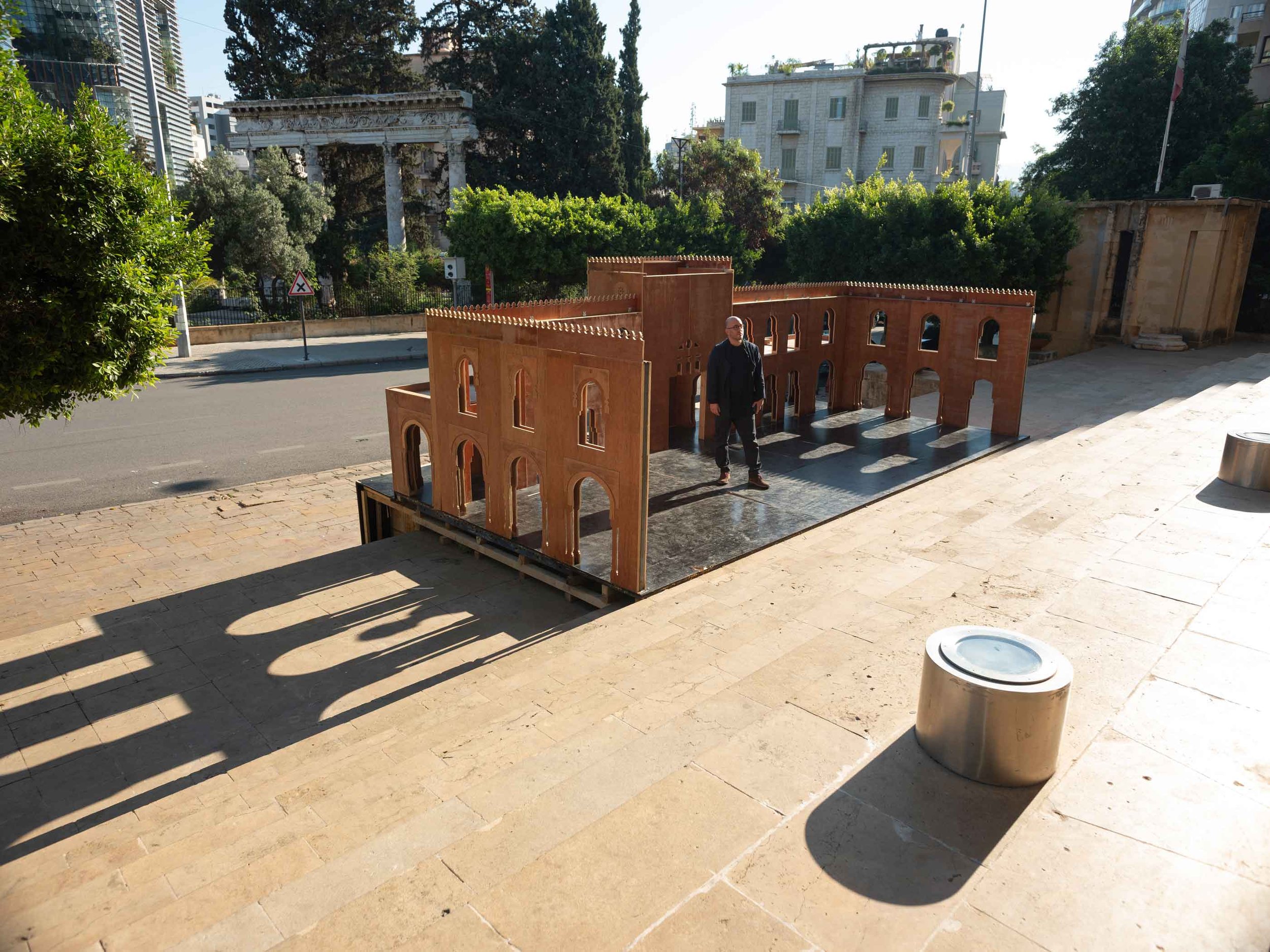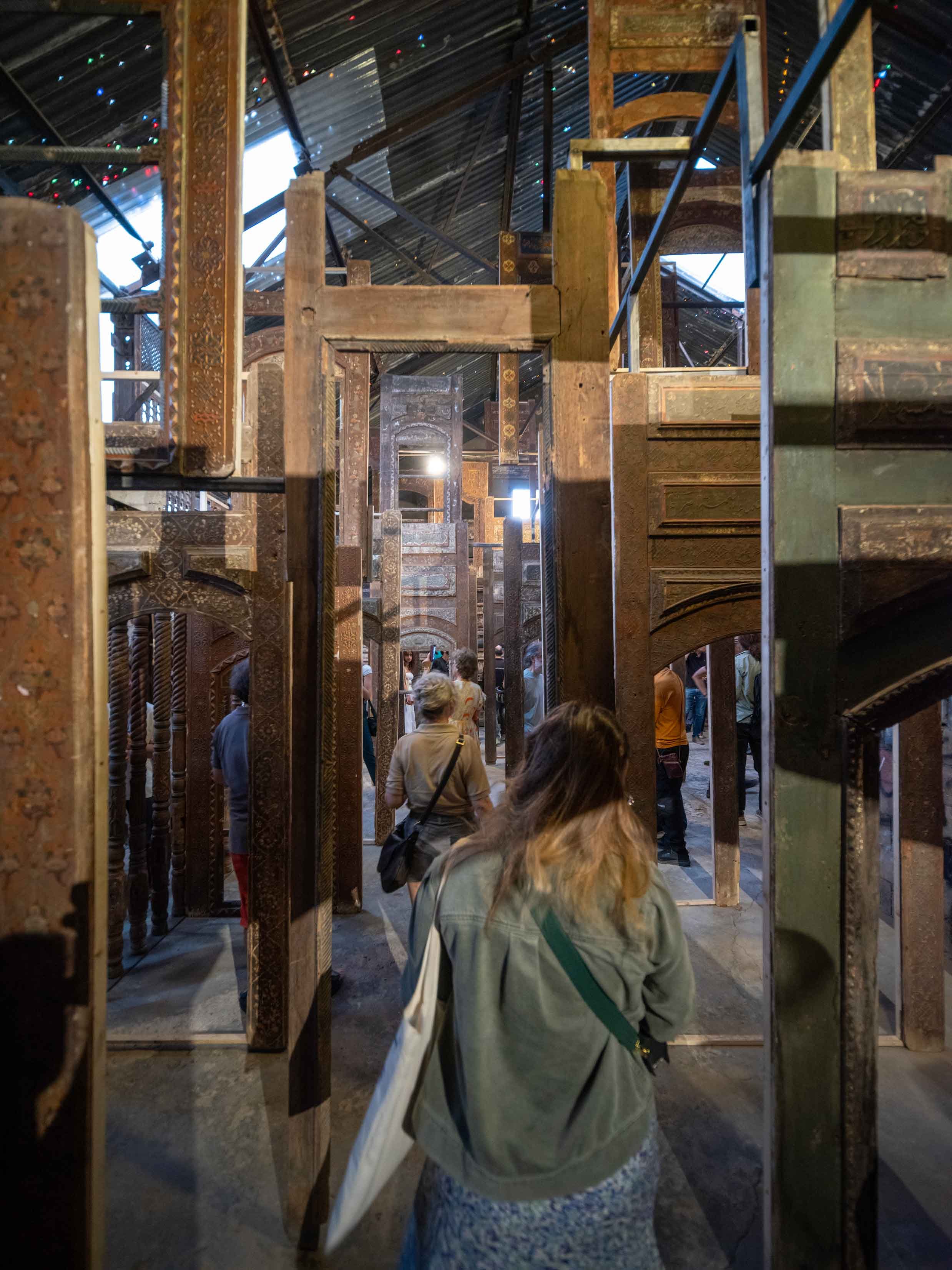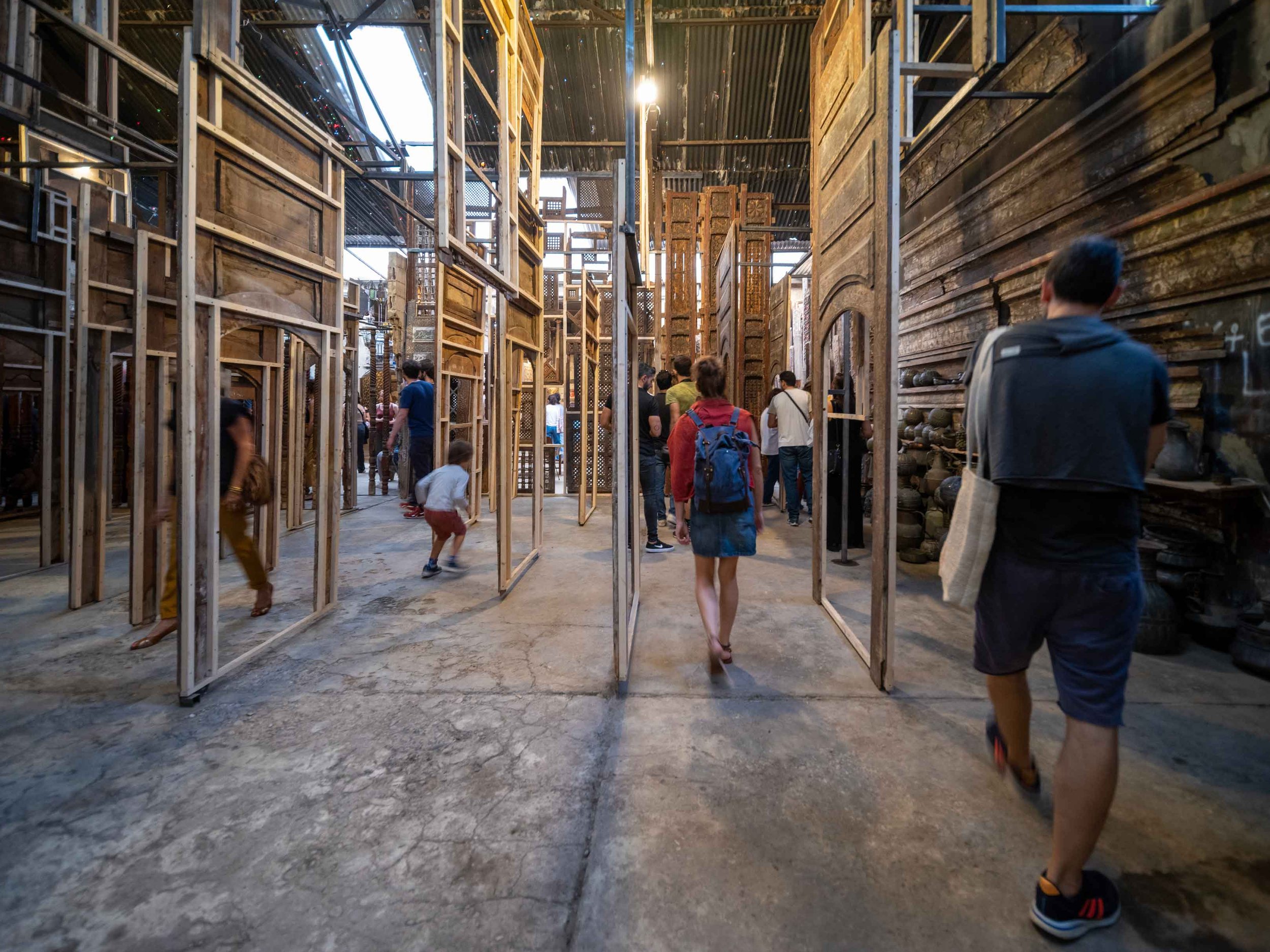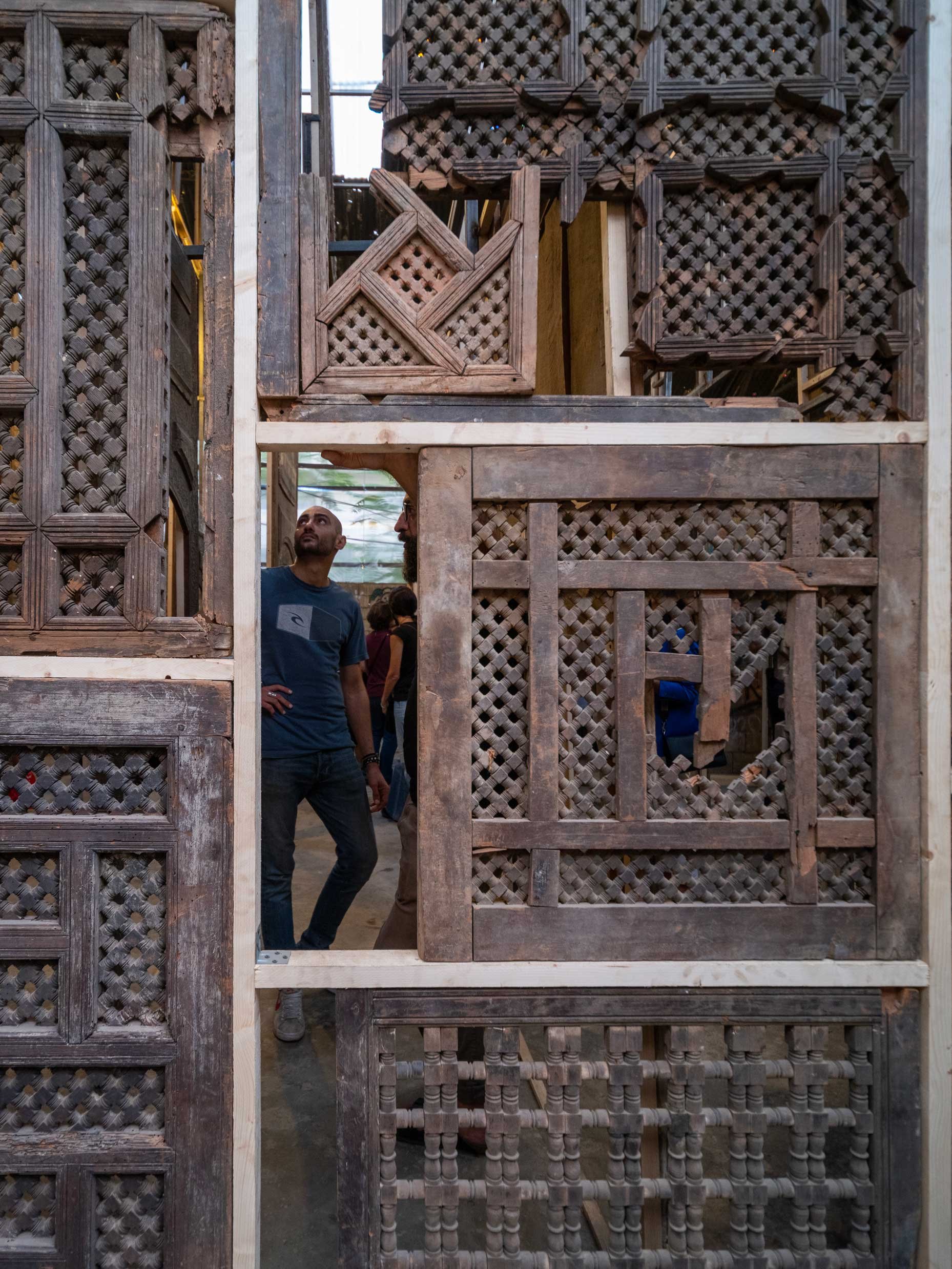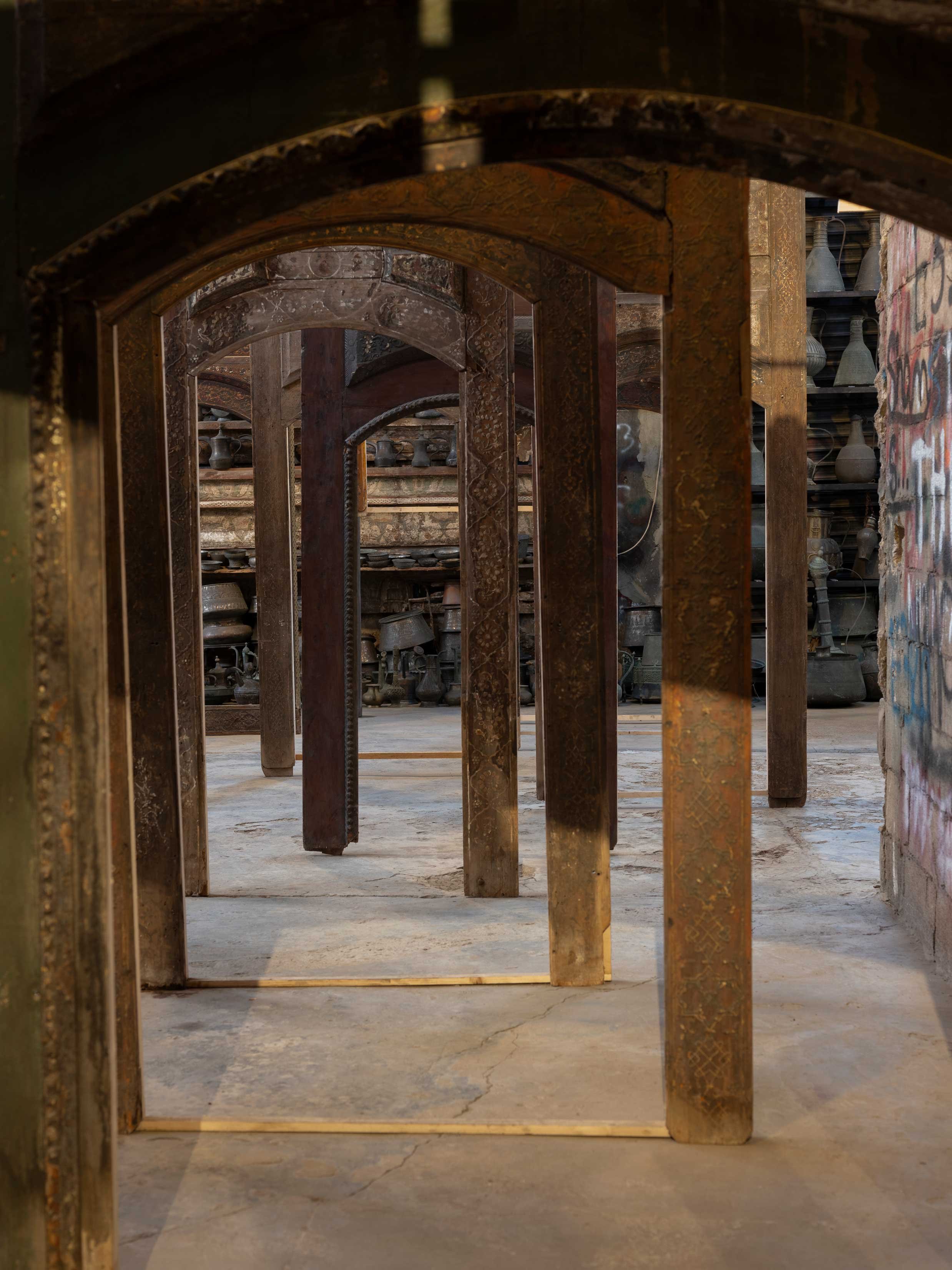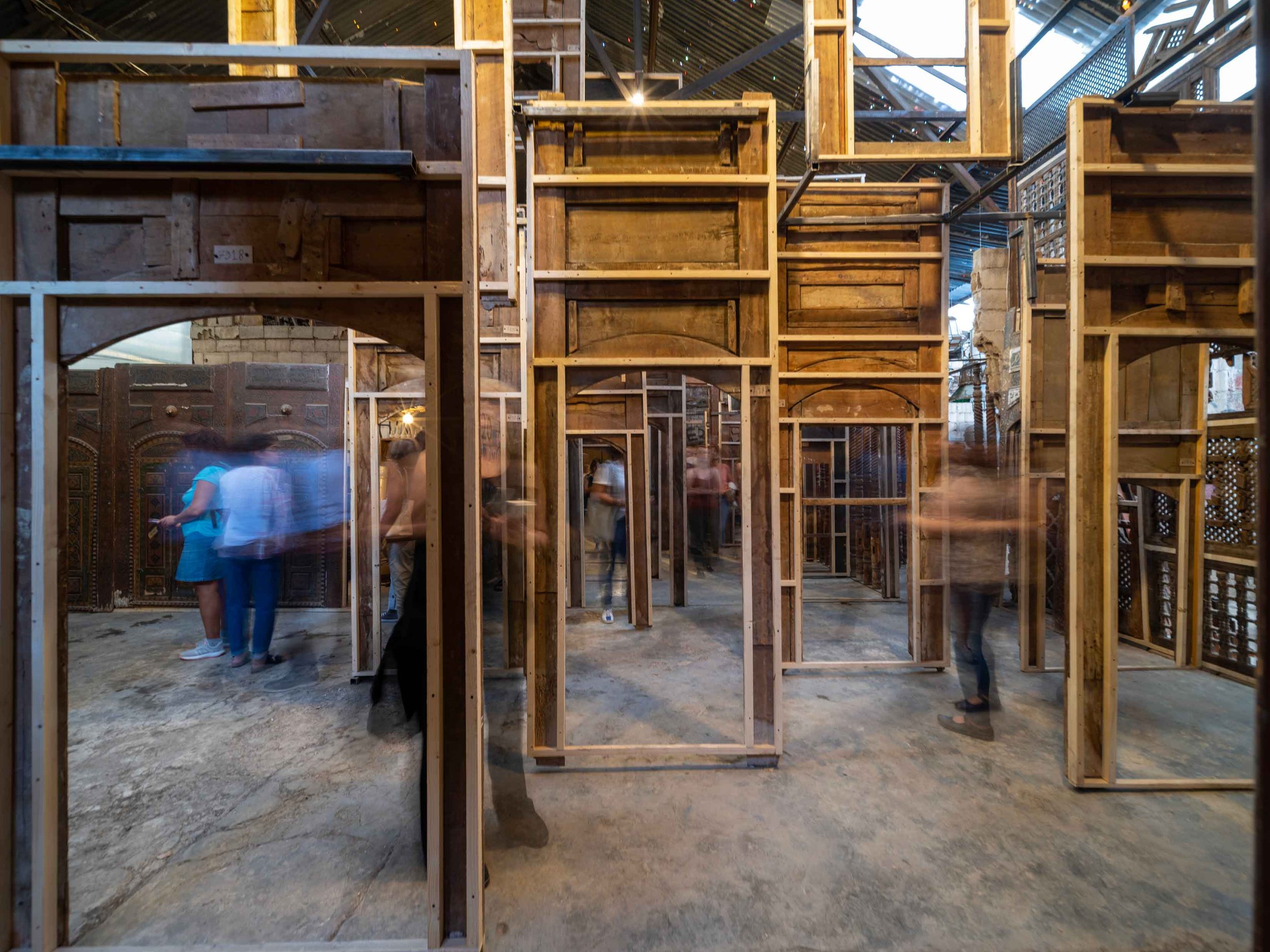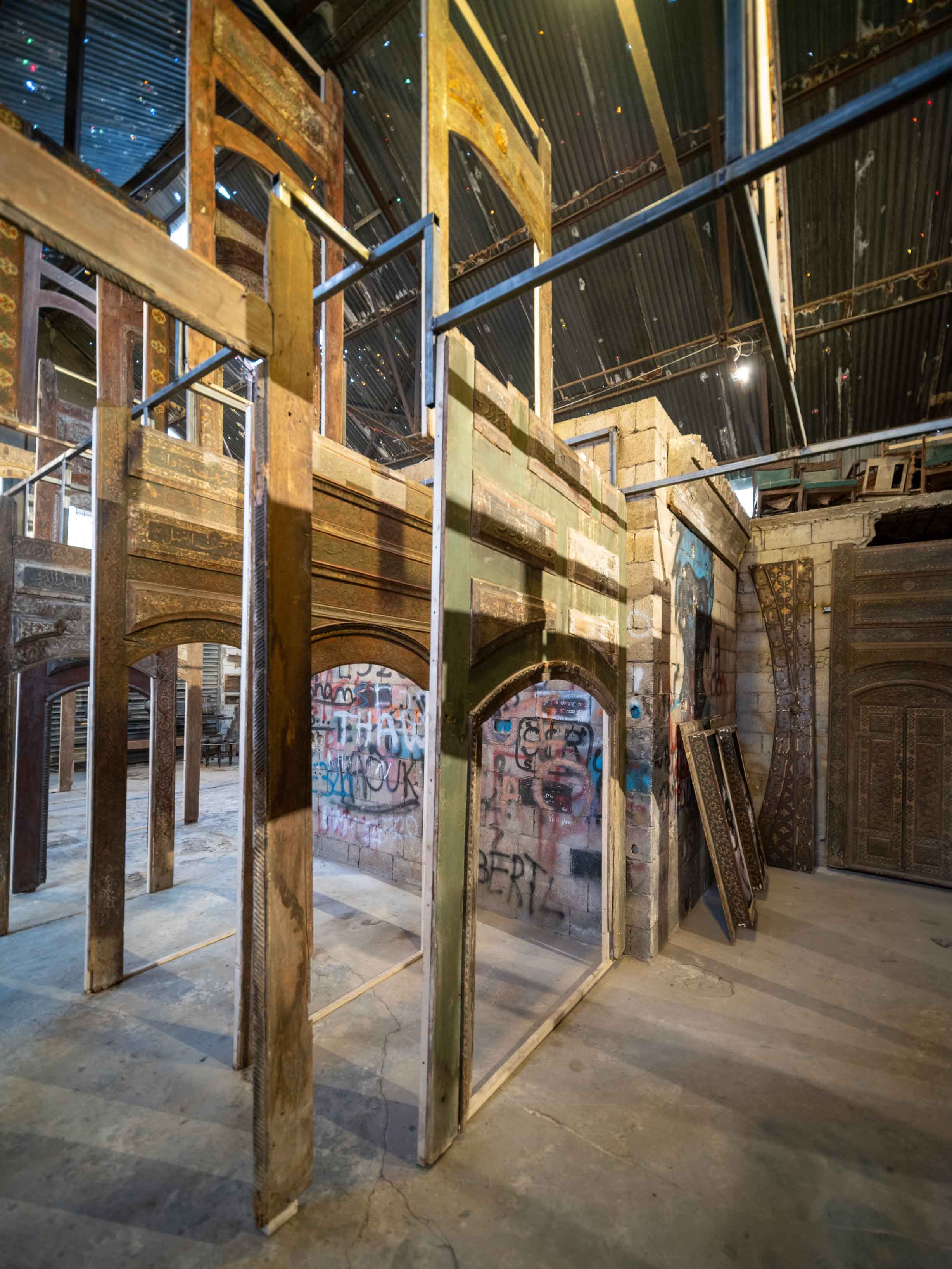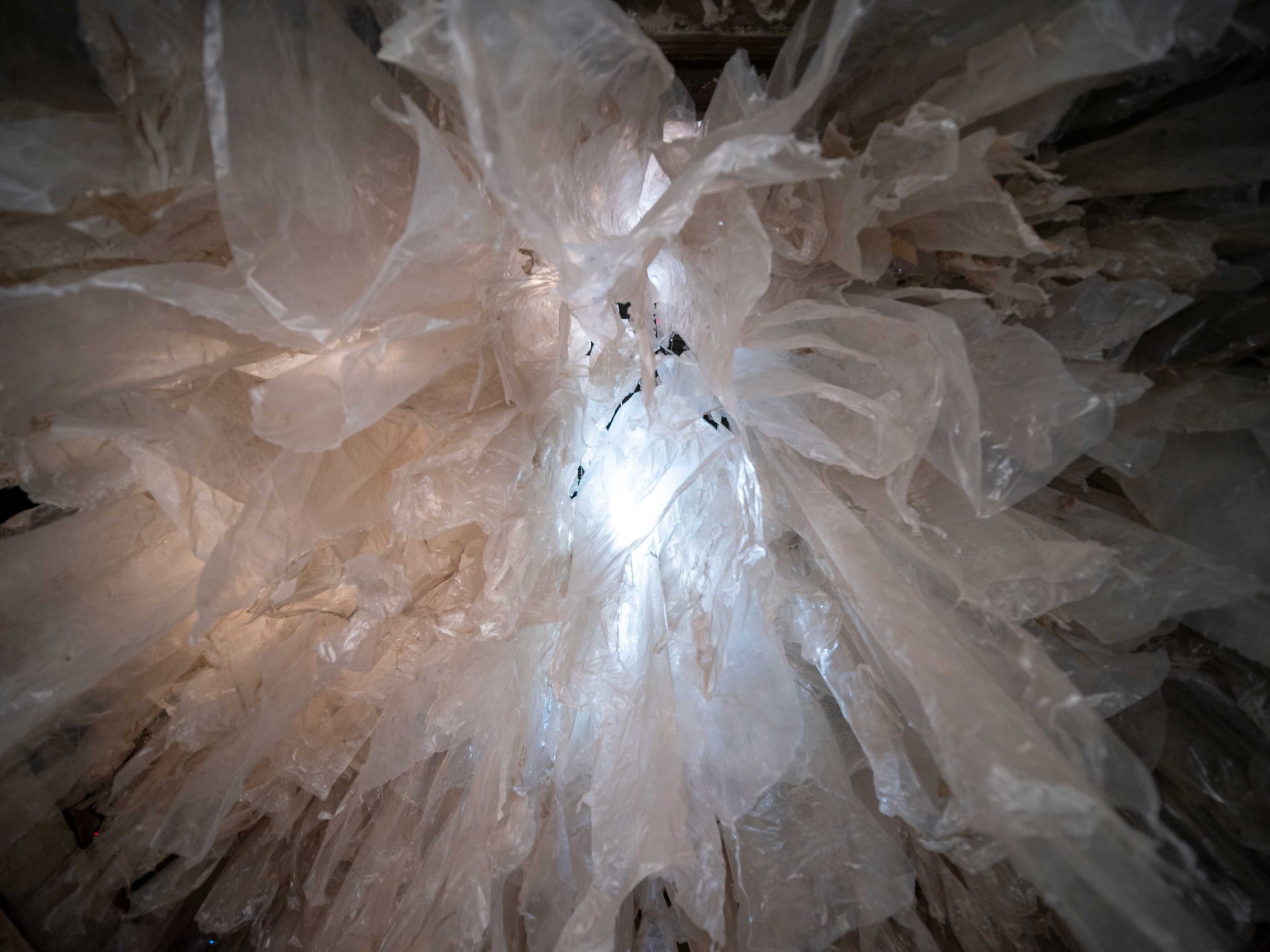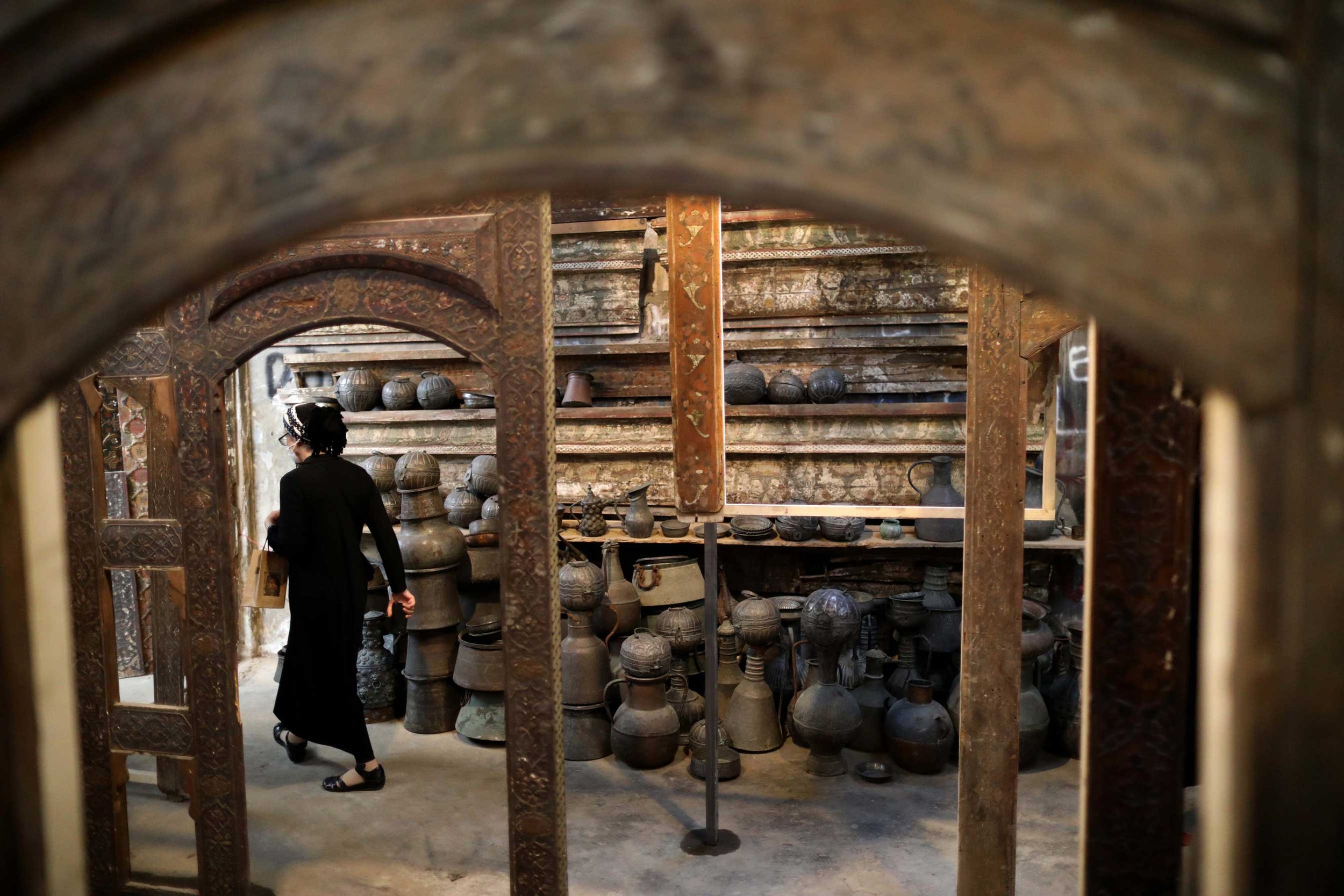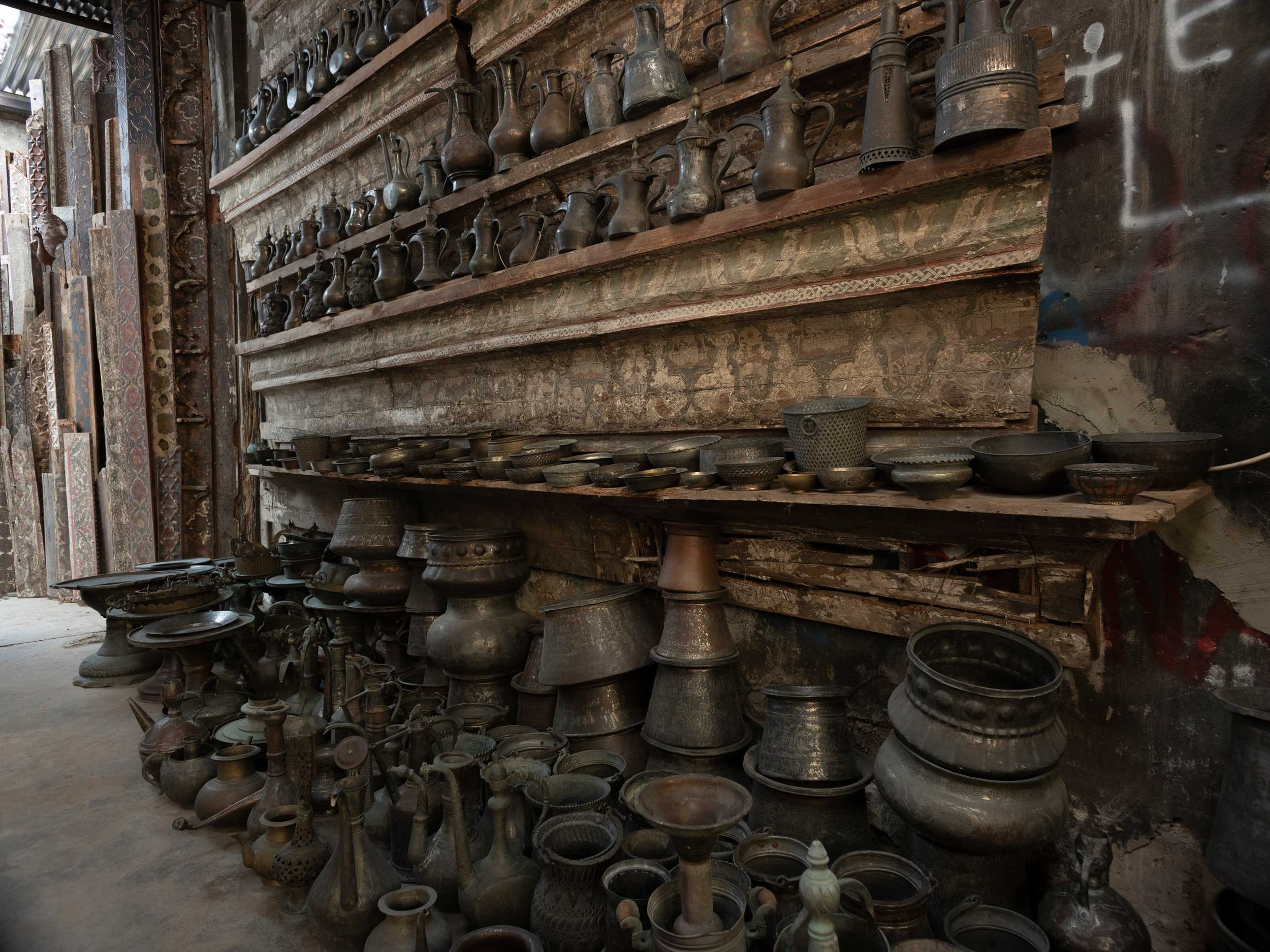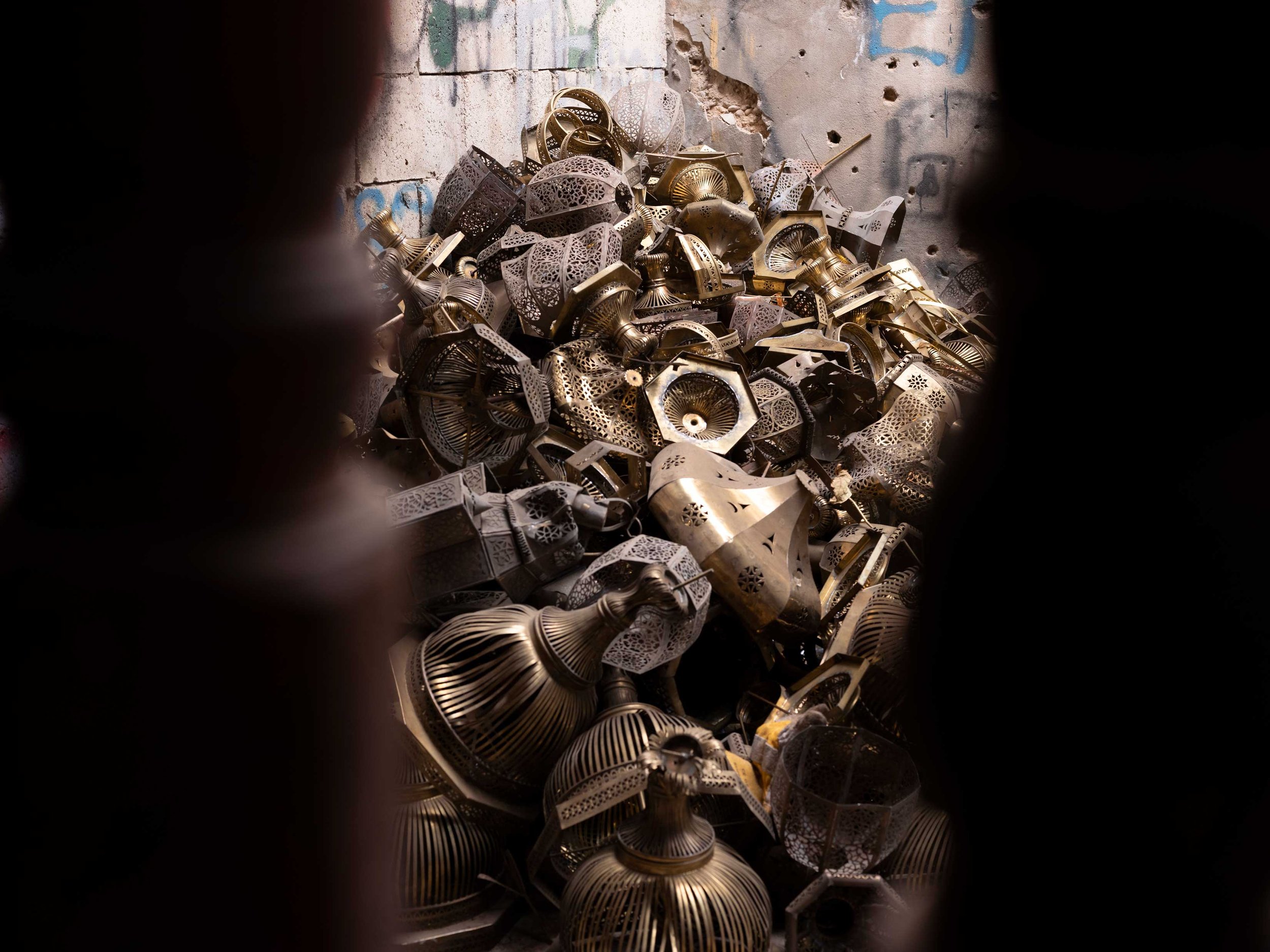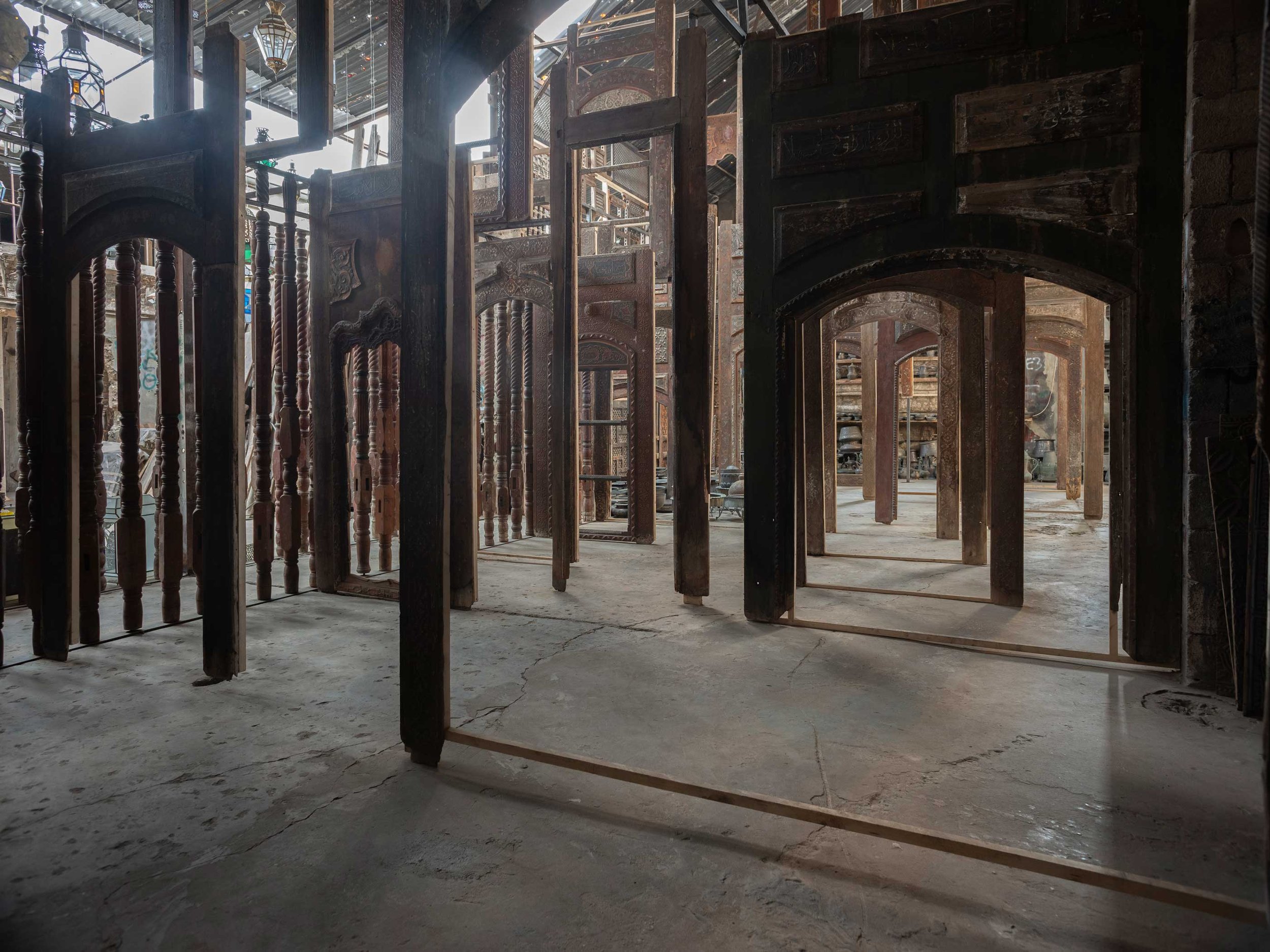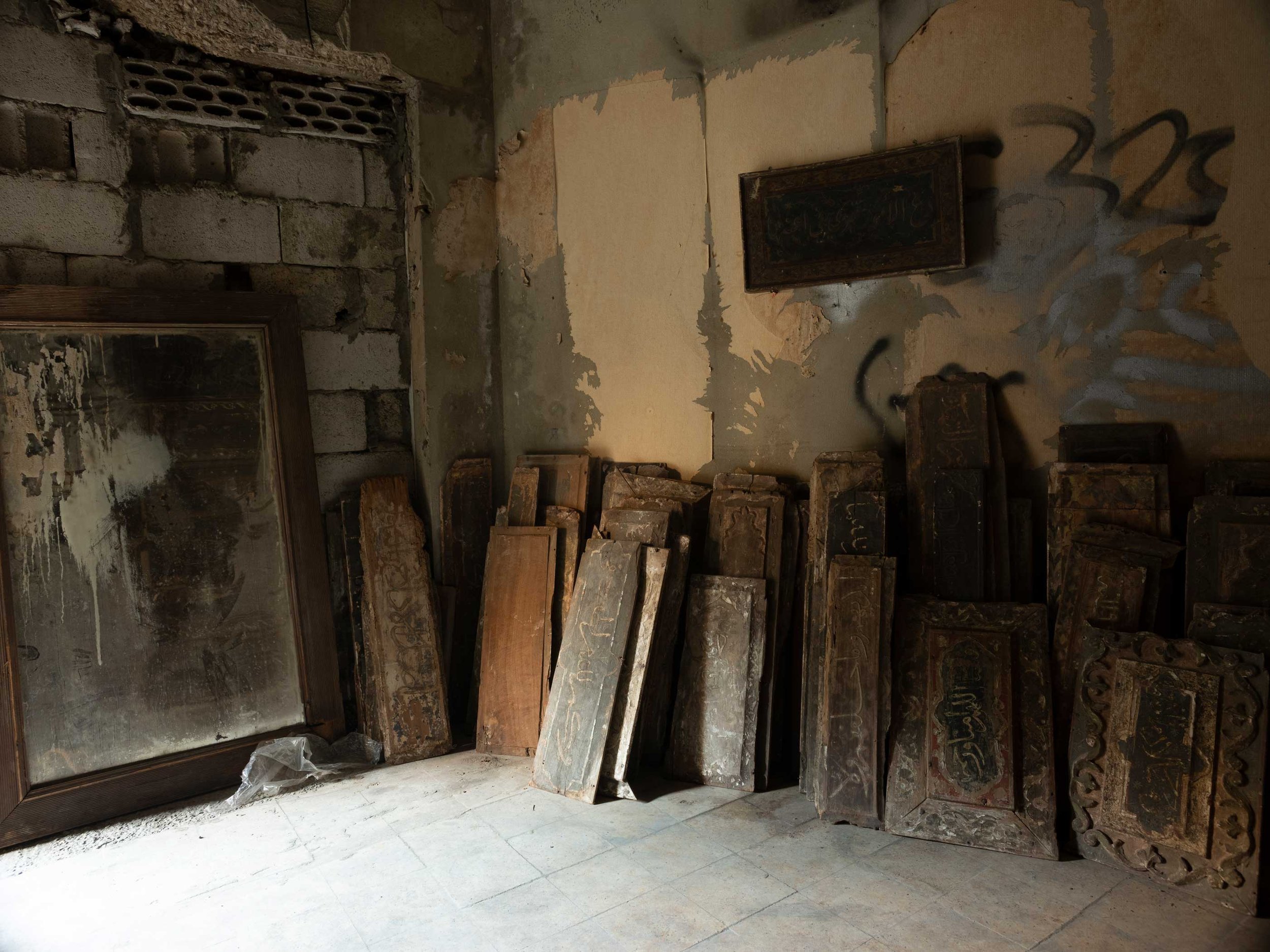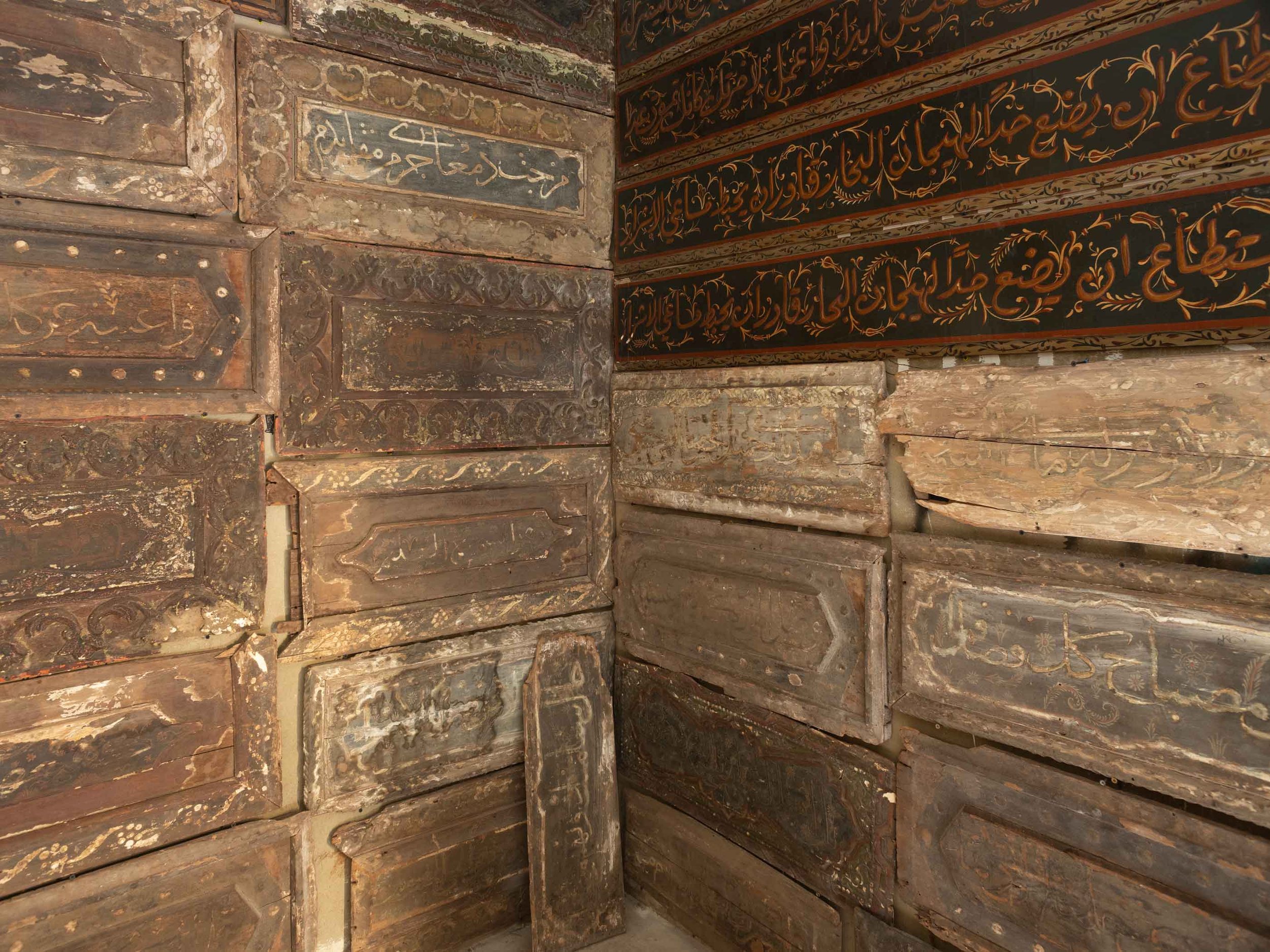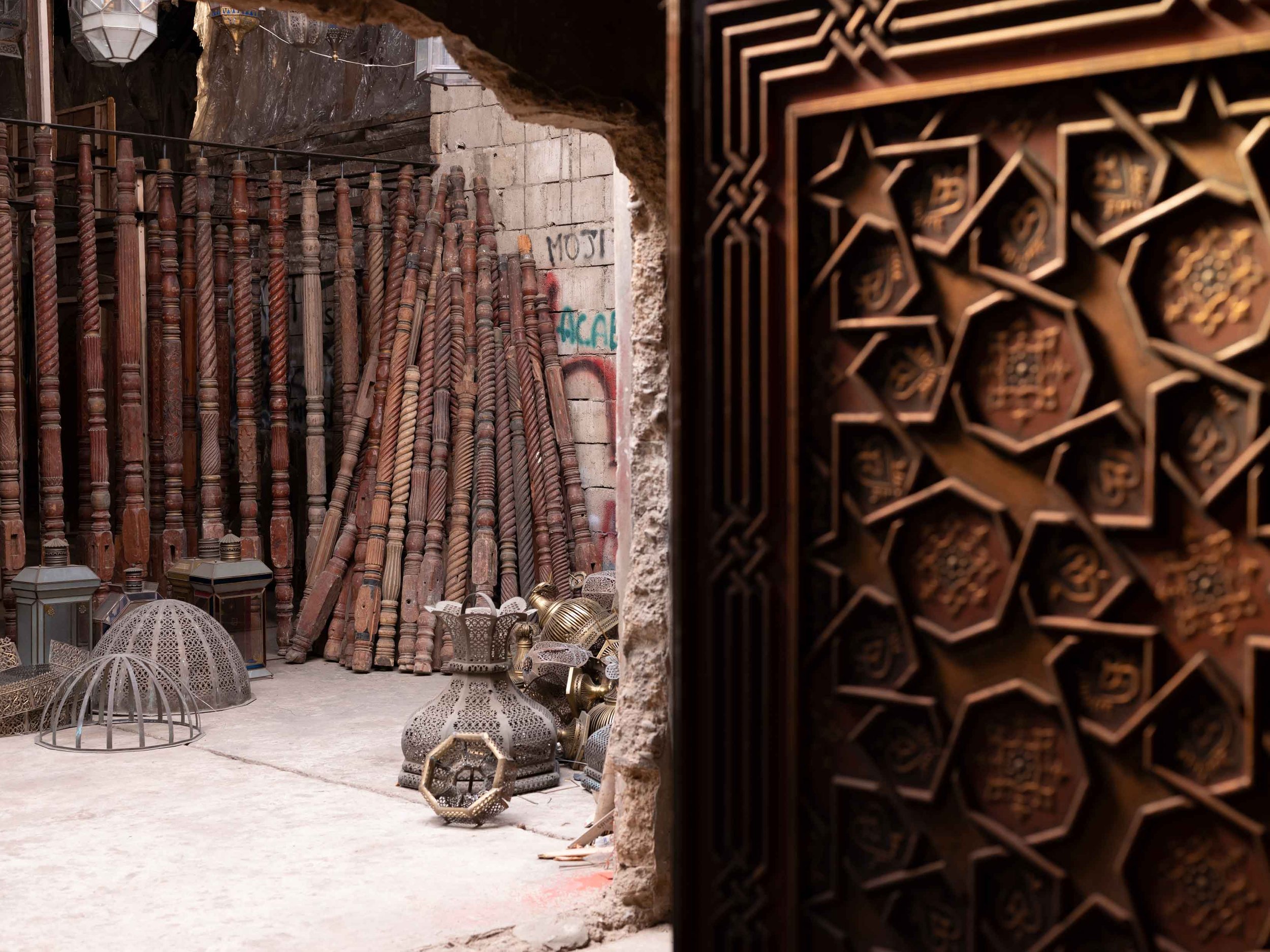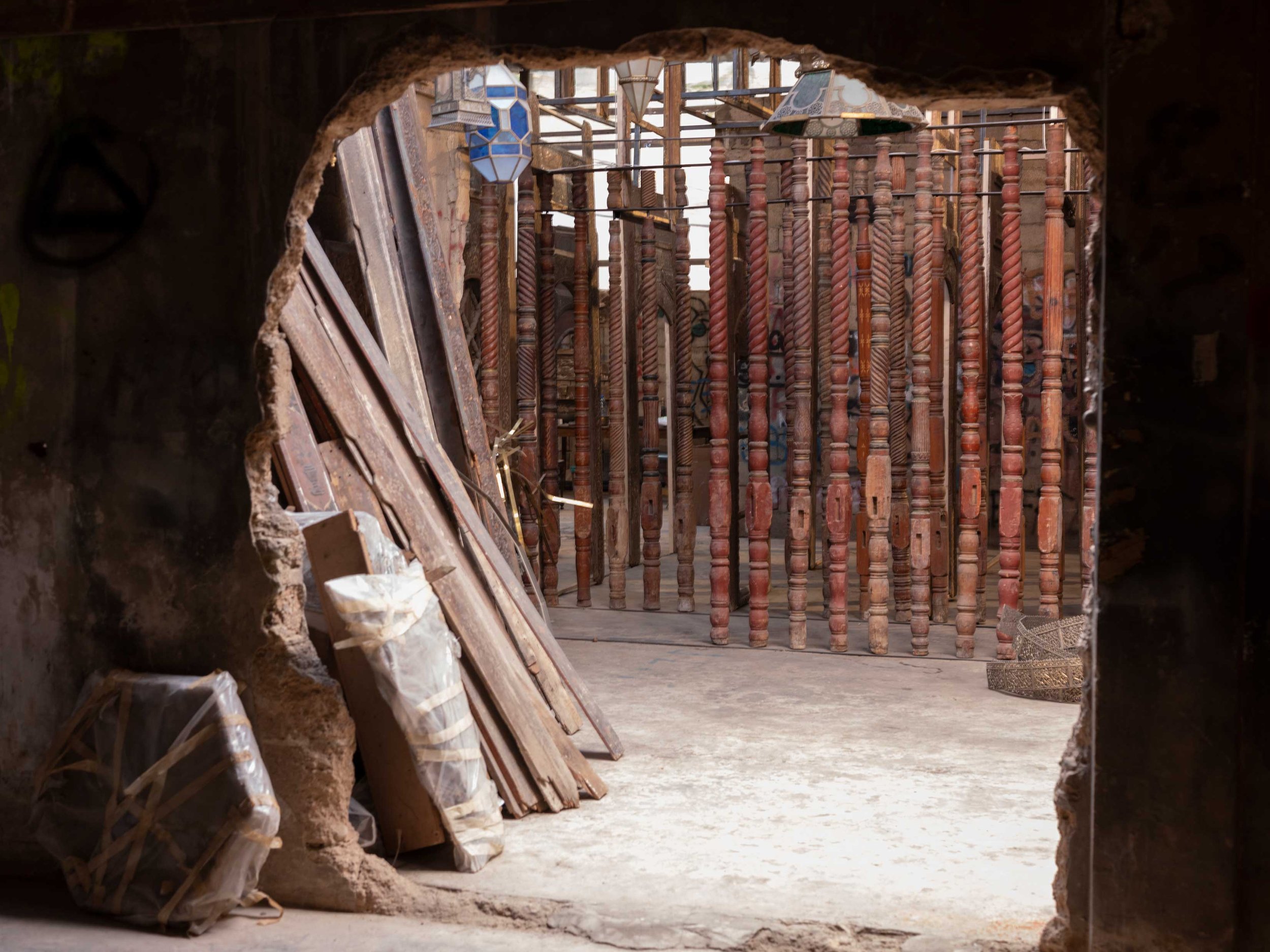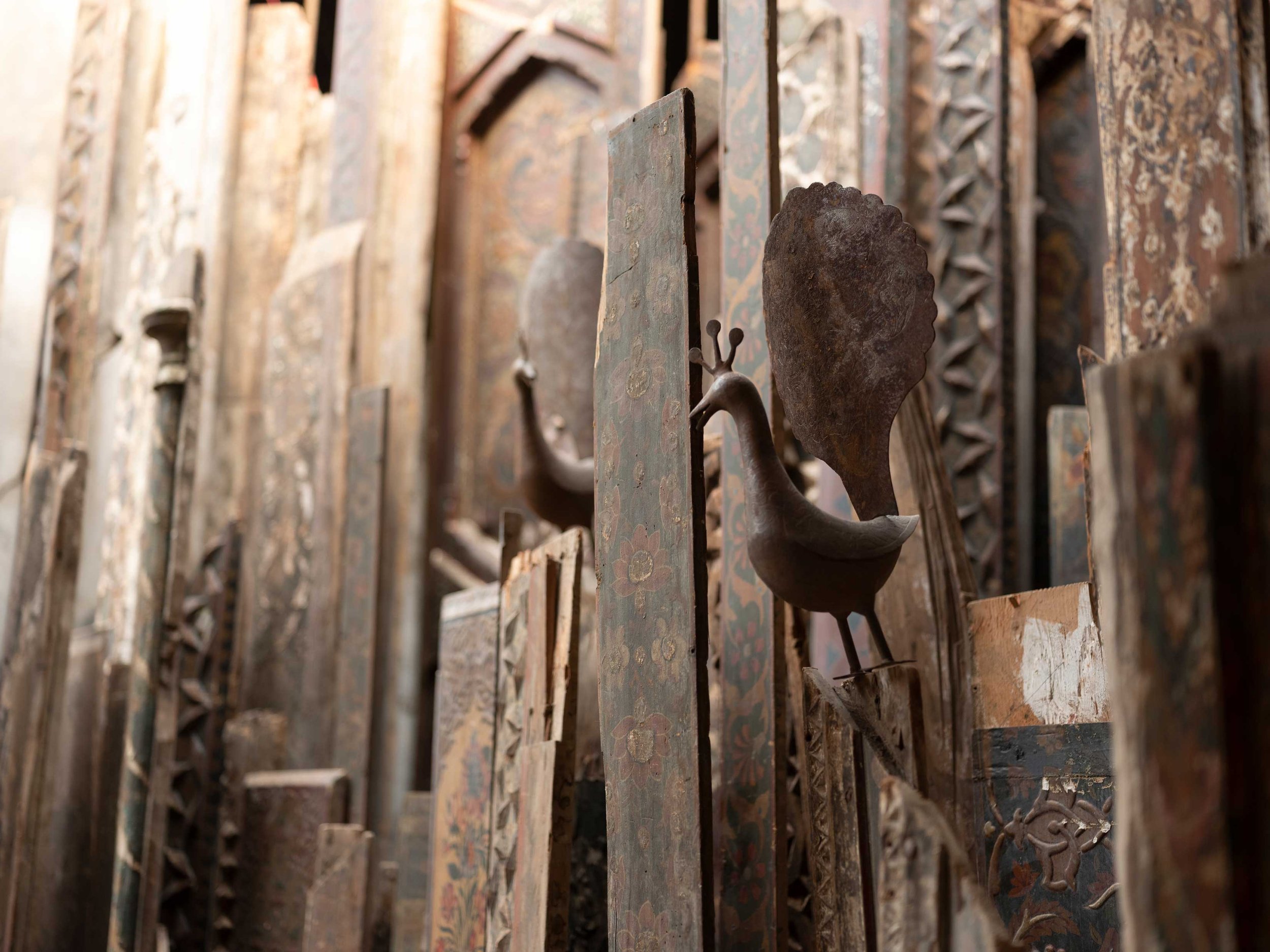+ hymne a l’amour
The National Museum of Beirut and an abandoned hangar in its vicinity, 2022
Hymne a L’Amour is an installation taking place between two spaces: the National Museum of Beirut and an abandoned hangar in its vicinity. In this installation, Tarazi deals with a wide range of objects inherited from his family’s century old business in oriental craftsmanship. Wood, copper, glass and other materials in varying degrees of degradation are presented to pose the stepping stone towards the creation of a museum of decorative arts in Lebanon.
“Hymne a L’Amour” is an installation by artist Alfred Tarazi in which he embraces and engages with both his personal family history and the history of craftsmanship in Lebanon and the wider Levant. The exhibition temporarily located in an abandoned hangar is supported by the French Embassy and the French Institute in Lebanon and was undertaken in partnership with UMAM Documentation and Research and the General Directorate of Antiquities.
The exhibition calls attention to memory and identity, both personal and collective, through handicraft items that have been overlooked by museums in Lebanon.
+ In the impossibility of integrating or even presenting objects relating to the heritage of decorative arts in Lebanon inside the National Museum of Beirut we decided to erect facing the museum a scaled model of the Residence des Pins to the scale of the model of the door presented to the client in 1914.
That scaled model was then used as a stage hosting a concert for the launch of Hymne a L’Amour.
You can find several museums dedicated to antiquities unearthed across Lebanon, then possibly, museums for modern or contemporary art, but in between antiquity and modernity, a great vacuum as if the generations that populated these lands never produced anything of cultural importance. In the west, that heritage has found its way in museums under the label of Islamic art, or decorative arts. In Lebanon however, it is a neglected and overlooked heritage. As we have been witnessing the disappearance of these crafts and without an effort to make these survive, we should to the very least preserve samples of these works.
+ The abandoned warehouse in which Hymne a L’Amour is presented.
The installation includes artifacts made from wood, copper and glass dating back to the eighteenth century. The items are part of the Tarazi family’s centennial heritage, as they were one of the pioneers of craft works in Lebanon and Syria. The installation crystallized the artist’s personal relationship with his family legacy. These remains of the family’s industry are presented in a state of precariousness and vulnerability. As the exhibition title suggests, the installation is a “love hymn” for artisanal work and a personal history, placed within the context of an abandoned and derelict building. The installation is dedicated to this love of crafts and materials.
Tarazi centers this exhibition and his other work on developing a cohesion between two different memories: the memory of place and the history of the items displayed. If the subject of memory and identity is one of the main themes in Tarazi’s work, perhaps the most prominent characteristic of his approach is his ability to extract memory from a fixed archival state and to turn these materials into artistic engagement.
+ + + + + + + + + + + + + + + + + + + + + + + + + + + + + + + + + + + + + + + + + + + + + + + + + + + +
